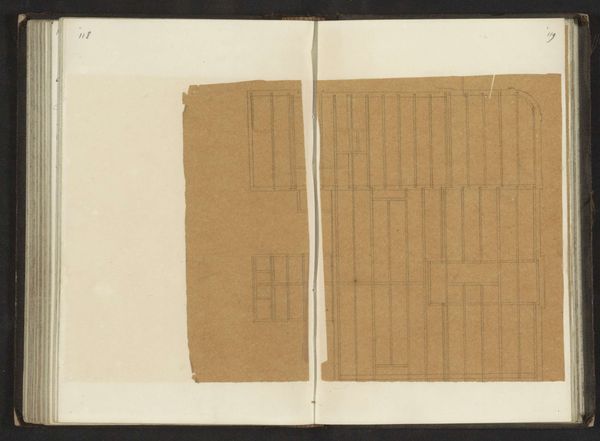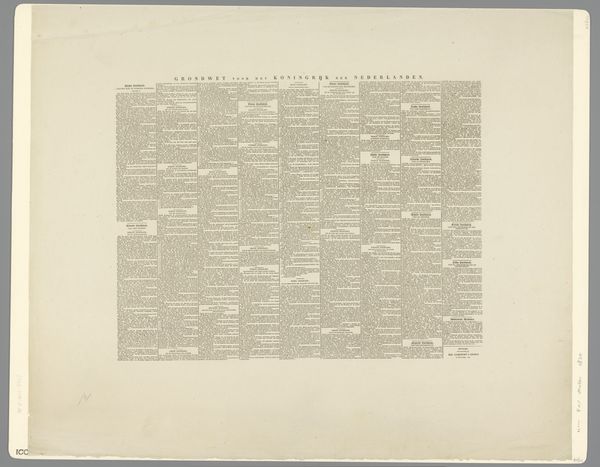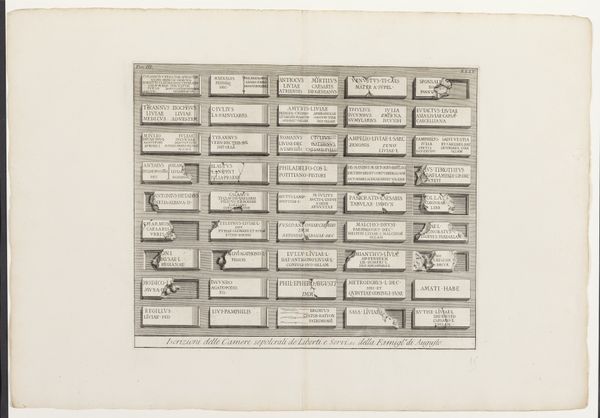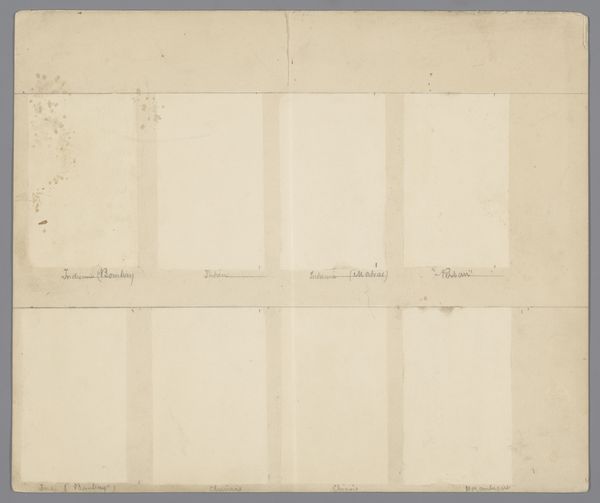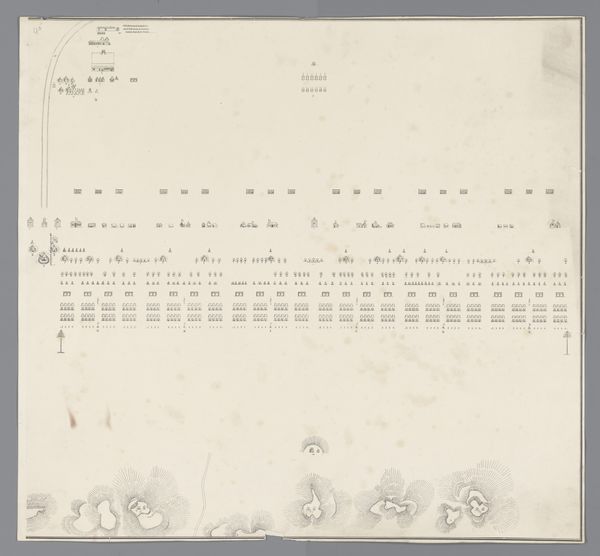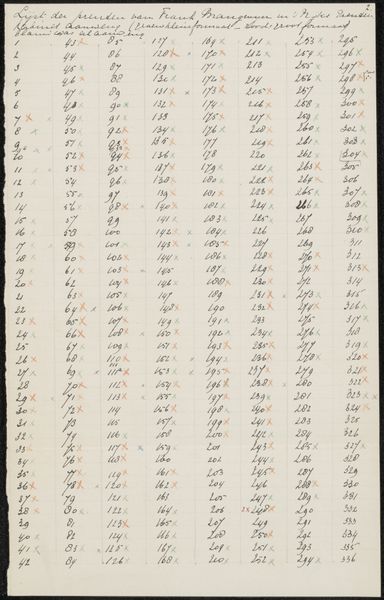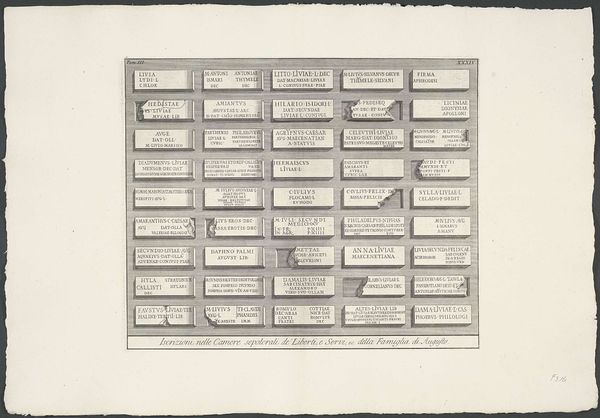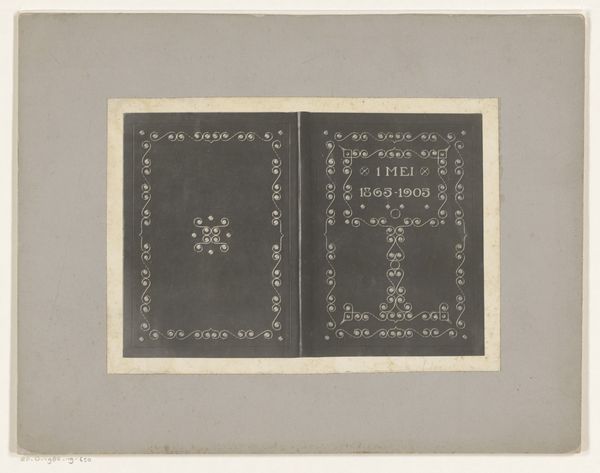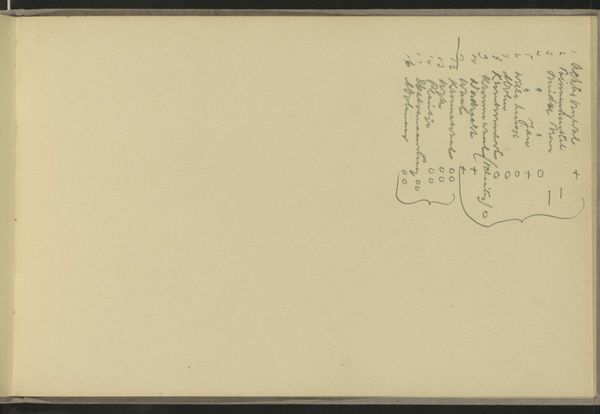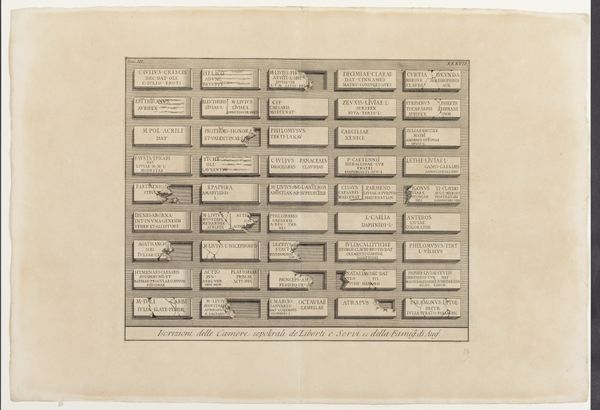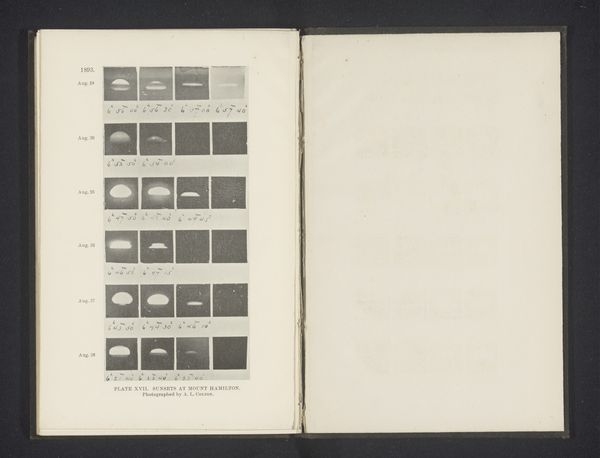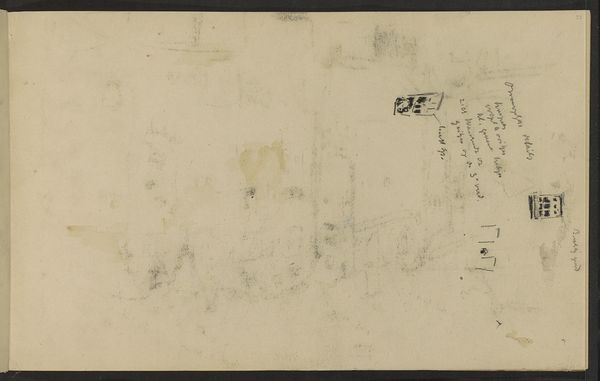
Kleurenschema met cijferaanduiding voor een glas in lood raam 1878 - 1938
0:00
0:00
drawing, print, paper, ink
#
drawing
#
art-nouveau
# print
#
pattern
#
op art
#
paper
#
ink
#
geometric
Copyright: Rijks Museum: Open Domain
Editor: This is Richard Nicolaüs Roland Holst’s "Kleurenschema met cijferaanduiding voor een glas in lood raam," a color scheme with numbers for a stained glass window, made sometime between 1878 and 1938, using ink and paper. The gridded pattern, the geometry...what should I be seeing here? Curator: What interests me is the interplay between the artisanal and the industrial in this preparatory drawing. Notice how it meticulously maps out a system, each cell assigned a color and number, pointing towards mass production, but still reliant on skilled handwork to produce the stained glass. How do the materials—ink, paper—contribute to this dynamic? Editor: So, it’s less about the aesthetic effect of the final window and more about... the labor involved in making it? Curator: Exactly. Art Nouveau often gets read for its flowing lines and organic forms. But this drawing forces us to consider the factory floor where those forms would come to life. Consider the economic context. Who would commission such a window, and who would be producing it? Editor: So, we’re looking at social class as embedded in the very *making* of this art object? It wasn’t created in a vacuum. Curator: Precisely. And what does it mean to reduce color to numerical code? Does this system liberate or constrain artistic expression, do you think? Editor: It's like the blueprint before the build, almost devoid of artistic flair. Before this conversation, I was ready to write it off as a draft. Curator: It invites us to analyze not just the end result, but the means of production that underpins the Art Nouveau style itself. Editor: Right. Thinking about the labor changes everything. Thanks, that’s really opened my eyes!
Comments
No comments
Be the first to comment and join the conversation on the ultimate creative platform.
